Browse our Growing Library of Success Stories
By:
Ted WilliamsFish are cold, slimy, unfeathered, unfurred, unheard, and usually unseen by non-anglers. So for the general public, including much of the environmental community, fish don’t count as wildlife.
https://www.landcan.org/success/Fish-are-wildlife-too-And-the-National-Park-Service-is-Recovering-Our-Lost-Natives/3833/
By:
Family Farm AllianceThis multi-generation family takes care of their livestock and ranch in a way that prioritizes the health of the land. They actively participate in conservation efforts and land stewardship programs, including conservation easements and river bank restoration projects in partnership with Fish and Wildlife. Preserving the integrity of their ranch and managing it responsibly is of utmost importance to them, and they have put considerable effort into estate planning to ensure its continued success.
https://www.landcan.org/success/Women-in-Ranching--Savery-Wyoming/3820/
By:
Jeff DiLuccia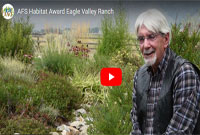 Nikos Monoyios has transformed the Lemhi river in northeastern Idaho to restore salmon spawning habitat. Nikos owns Eagle Valley ranch just south of salmon, Idaho. What Nikos and his wife Valerie have done is truly Olympian, and just proves Margaret Meade’s famous saying that :”Never doubt that a small group of thoughtful, committed citizens can change the world…” Nikos is the living embodiment of private land owners being the phalanx for conservation and species restoration.
Nikos Monoyios has transformed the Lemhi river in northeastern Idaho to restore salmon spawning habitat. Nikos owns Eagle Valley ranch just south of salmon, Idaho. What Nikos and his wife Valerie have done is truly Olympian, and just proves Margaret Meade’s famous saying that :”Never doubt that a small group of thoughtful, committed citizens can change the world…” Nikos is the living embodiment of private land owners being the phalanx for conservation and species restoration.
https://www.landcan.org/success/American-Fisheries-Association-Aquatic-Habitat-Award/3798/
By:
Ashley Pratt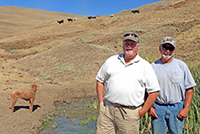 Sparling Ranch Conservation Bank creates a win-win for ranchers, developers, wildlife
Sparling Ranch Conservation Bank creates a win-win for ranchers, developers, wildlife
https://www.landcan.org/success/Where-Cattle-Graze-and-Salamanders-Roam/3327/
By:
Sage Grouse Initiative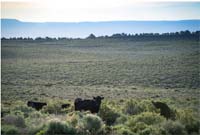 Research from an eight-year study in the Warner Mountains shows why strategically removing encroaching trees spells good news for sage grouse, a declining upland bird that serves as a benchmark for the overall health of the sagebrush biome. Researchers quantified a six-fold increase in sage grouse’s preferred habitat following woodland management and a population growth rate that was +12 percent higher in the treated area than in the control area without management.
Research from an eight-year study in the Warner Mountains shows why strategically removing encroaching trees spells good news for sage grouse, a declining upland bird that serves as a benchmark for the overall health of the sagebrush biome. Researchers quantified a six-fold increase in sage grouse’s preferred habitat following woodland management and a population growth rate that was +12 percent higher in the treated area than in the control area without management.
This adds to a growing list of research — much of it based on the long-term study in the Warners — that documents the myriad benefits of conifer removal for wildlife and grazing lands.
https://www.landcan.org/success/Restoring-the-Sagebrush-Sea-The-Warner-Mountains-Story/3757/
By:
Leopold Conservation Award Program
“Treat the range like a lady,” is just one piece of advice Gilbert Yardley gave his son Steven.
For five generations the Yardleys have embraced a sacred stewardship for the land their livelihood depended on.
Best known for selling high quality beef cattle, the Yardleys know good livestock production begins with conservation practices that benefit the forage upon which their cattle rely.
https://www.landcan.org/success/Yardley-Cattle-Company/3772/
By:
Leopold Conservation Award Program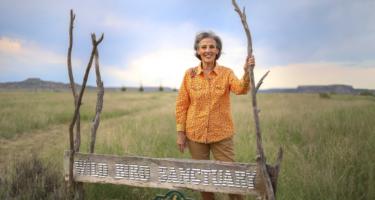 Inspired by seven generations of family on the land and Aldo Leopold’s land ethic, Tuda Libby Crews approached land restoration by collaborating with others.
Inspired by seven generations of family on the land and Aldo Leopold’s land ethic, Tuda Libby Crews approached land restoration by collaborating with others.
Tuda and her husband Jack realized restoration of Ute Creek Cattle Company required open minds, innovation, and financial/technical resources. Implementing conservation practices has transformed their shortgrass prairie ecosystem.
https://www.landcan.org/success/Ute-Creek-Cattle-Company/3771/
By:
Leopold Conservation Award Program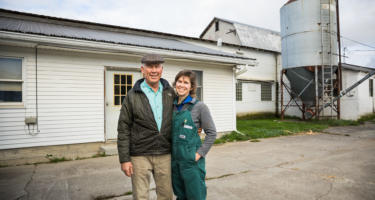 When it comes to on-farm research, Table Rock Farm is at the head of the class.
When it comes to on-farm research, Table Rock Farm is at the head of the class.
Its owners and employees have long understood the importance of opening the dairy farm’s barns and fields to researchers. Whether it’s improving conservation, cows or crops, the results have a positive ripple effect throughout agriculture.
https://www.landcan.org/success/Table-Rock-Farm/3770/
By:
Leopold Conservation Award Program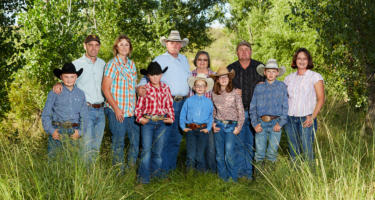 Sarah Sortum and Adam Switzer are siblings and fourth-generation ranchers committed to the stewardship of Switzer Ranch.
Sarah Sortum and Adam Switzer are siblings and fourth-generation ranchers committed to the stewardship of Switzer Ranch.
They express a land ethic passed down from their parents, Bruce and Sue Ann Switzer, by implementing agricultural conservation practices and connecting others with nature.
https://www.landcan.org/success/Switzer-Ranch/3769/
By:
Leopold Conservation Award Program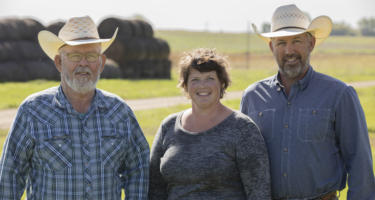 The same can be said of his implementation of conservation practices at Sand Ranch ever since.
The same can be said of his implementation of conservation practices at Sand Ranch ever since.
“When you take an active role in making the land better, it’ll take care of you and the people who eat your food,” Brad said.
https://www.landcan.org/success/Sand-Ranch/3768/
By:
Leopold Conservation Award Program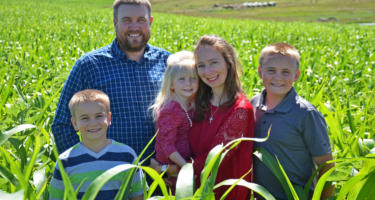 Aldo Leopold wrote, “Prairie was, in fact, a community of wild animals and plants so organized, as to build, through the centuries, the rich soil which now feeds us.”
Aldo Leopold wrote, “Prairie was, in fact, a community of wild animals and plants so organized, as to build, through the centuries, the rich soil which now feeds us.”
Levi and Crystal Neuharth connect with this quote, as they sustainably manage cropland and grassland at Prairie Paradise Farms.
https://www.landcan.org/success/Prairie-Paradise-Farms/3767/
By:
Leopold Conservation Award Program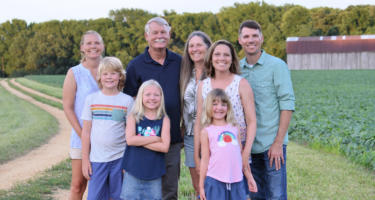 When the Warrings bought their farm in 2009, they set out to leave it better than they found it. Their Persistence Creek Farm has become a confluence of how farming, fishing and forestry businesses can benefit natural resources.
When the Warrings bought their farm in 2009, they set out to leave it better than they found it. Their Persistence Creek Farm has become a confluence of how farming, fishing and forestry businesses can benefit natural resources.
Healthier soil leads to higher crop yields. Cleaner water leads to higher crab and oyster populations. Agricultural conservation practices are good for the bottom line and natural resources.
https://www.landcan.org/success/Persistence-Creek-Farm/3766/
By:
Leopold Conservation Award Program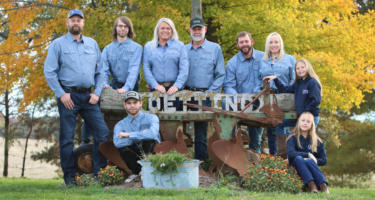 In the 1970s, the Oettings transitioned from dairy to pork production. To store swine manure, they constructed a three-lagoon system with an adjoining 2.8 acre lake which eliminated the need to purchase 1.3 million gallons of fresh water annually. The lake is used for watering livestock and other farm uses including washing barns. Effluent treated in the lagoons is recycled to provide nutrients for crops at a much lower cost than commercial fertilizer.
In the 1970s, the Oettings transitioned from dairy to pork production. To store swine manure, they constructed a three-lagoon system with an adjoining 2.8 acre lake which eliminated the need to purchase 1.3 million gallons of fresh water annually. The lake is used for watering livestock and other farm uses including washing barns. Effluent treated in the lagoons is recycled to provide nutrients for crops at a much lower cost than commercial fertilizer.
A healthy population of stocked bluegill, catfish and bass are a testament to the Oettings’ success in appropriately applying effluent on the fields in an environmentally sound way.
https://www.landcan.org/success/Oetting-Homestead-Farms/3765/
By:
Leopold Conservation Award Program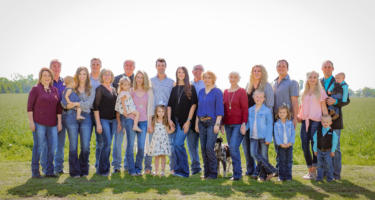 “We understand that our ranch is not just a collection of land, plants, cattle, and wildlife,” says Dallas May, “but it is a community.”
“We understand that our ranch is not just a collection of land, plants, cattle, and wildlife,” says Dallas May, “but it is a community.”
Conserving that community in a sustainable way is a goal shared by Dallas and his wife Brenda, and the families of their grown children: Holly, Riley and Haley.
https://www.landcan.org/success/May-Ranch/3764/
By:
Leopold Conservation Award Program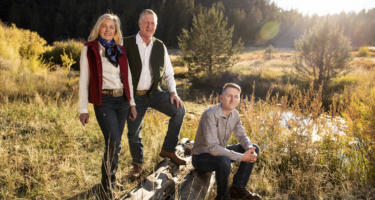 An inspiring transformation at Witcher Creek Ranch is thanks to Marie and Glenn Nader’s willingness to think big and bold.
An inspiring transformation at Witcher Creek Ranch is thanks to Marie and Glenn Nader’s willingness to think big and bold.
Marie, Glenn, and their son, Alan, are dedicated to promoting water conservation and soil health on a working cattle ranch. They credit state and federal conservation-focused programs and grants with helping them make dramatic changes on their 2,880 acres of Modoc County.
https://www.landcan.org/success/Marie-and-Glenn-Nader/3763/
By:
Leopold Conservation Award Program They’ve worked shoulder to shoulder to improve their farm’s environmental and economic resilience with conservation practices and direct marketing.
They’ve worked shoulder to shoulder to improve their farm’s environmental and economic resilience with conservation practices and direct marketing.
Both were born on Wisconsin farms, but their path back to farming was hard won. They worked off-farm jobs out West before saving enough for a down payment on 280 acres in Columbia County in 1986. After growing asparagus with John’s brother, their first years of raising livestock and row crops were met with struggle due to low commodity prices.
https://www.landcan.org/success/John-and-Dorothy-Priske/3762/
By:
Leopold Conservation Award Program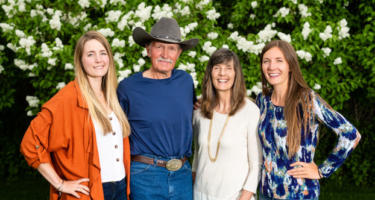 Kelly Flynn taught his daughters to raise a baby lamb, ride a horse, and ultimately, run a ranch.
Kelly Flynn taught his daughters to raise a baby lamb, ride a horse, and ultimately, run a ranch.
His land ethic was passed down from relatives who carved a living from the land since the 1860s. He recalled his aging parents pulling weeds on hot days. With those values etched in his mind, he spent a life caring for livestock, wildlife, and 6,000 acres of meadows, creeks and forests.
https://www.landcan.org/success/Hidden-Hollow-Hideaway-Cattle-and-Guest-Ranch/3761/
By:
Leopold Conservation Award Program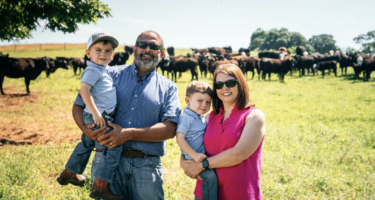 Farming land his grandmother once owned, Fred L. Sipes says he’s a caretaker of a precious resource.
Farming land his grandmother once owned, Fred L. Sipes says he’s a caretaker of a precious resource.
Fred began growing 50 acres of burley tobacco, fresh out of high school in 1994. Even then, conservation was important to him. He knew consistent improvement and diversification would be critical to his farm’s survival.
https://www.landcan.org/success/FL-Sipes-Farms/3760/
By:
Leopold Conservation Award Program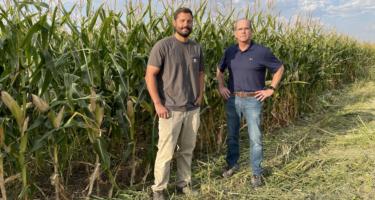 Grow crops with less water. That challenge spurred an ever-expanding land ethic in Dwane Roth.
Grow crops with less water. That challenge spurred an ever-expanding land ethic in Dwane Roth.
Dwane knew of the declining water level in the Ogallala aquifer he farms above. He felt he was already doing his part by increasing crop yields with reduced equipment and labor costs. Then a cropland landlord challenged him to look into irrigation technology.
https://www.landcan.org/success/Dwane-Roth/3759/
By:
Leopold Conservation Award Program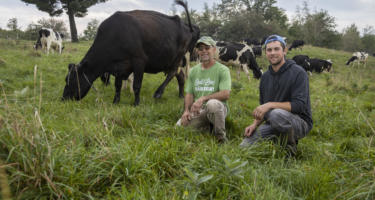 Guy Choiniere believes the health of the soil is the health of the farm. This land ethic drives his actions on a dairy farm that’s been in the Choiniere family since 1945.
Guy Choiniere believes the health of the soil is the health of the farm. This land ethic drives his actions on a dairy farm that’s been in the Choiniere family since 1945.
While navigating changes in the farm economy, climate and farming practices, the Choiniere Family Farm has become a model of innovation and adaptability for other New England dairies.
https://www.landcan.org/success/Choiniere-Family-Farm/3758/
 Sign In
Sign In
 Sign In
Sign In
